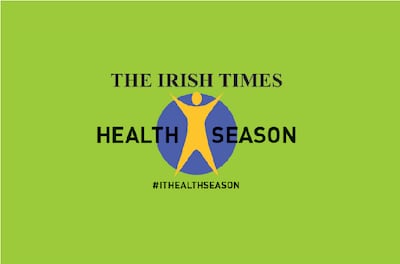
Aoibhín McGreal is the founder and clinical director of Vie Physio, a specialist pelvic and women's health physiotherapy clinic in Kildare. She also works in Beacon Hospital, Dublin. In the first of two articles she gives some information and advice to women about pelvic health. A second article (next week) will address issues in pregnancy and the postnatal period.
- The most common reasons to visit a women’s health physiotherapist like myself – aside from pregnancy and post-natal issues – are urinary incontinence, pelvic pain, painful sex, prolapse and bowel dysfunction; that can be bowel incontinence, or difficulty in emptying the bowel.
- It's not just women who have had babies who experience issues. In The Mammi Study, more than 21 per cent of women surveyed were having painful sex pre-pregnancy, and 23 per cent experienced stress incontinence. Incontinence can be quite common in teenage girls and I see a lot of young women about painful sex.
- Physiotherapy is a first-line treatment for many pelvic floor issues. Specialist chartered physiotherapists are in primary care, hospitals, and private practice. For more information see iscp.ie.
- You should be assessed by a specialist physiotherapist if you have urinary incontinence. There are two main types: stress incontinence happens when you are laughing, coughing, sneezing, running, jumping, etc; urge incontinence, or urgency and frequency, is when you get a very strong urge, but find it difficult to make it to the toilet on time, and you may empty your bladder very frequently.
- The triggers and severity of stress incontinence vary, so individualised programmes focus on improving the strength, endurance and function of pelvic floor muscles.
- About one in three women will have trouble doing pelvic floor exercises – Kegels – properly. Focus on your back passage, squeezing as if to stop yourself breaking wind. The recommendation is to hold this contraction for 10 seconds, repeat 10 times, and follow with 10 quick ones, three times a day. However, a lot of women coming in to us start off with shorter holds, building up to 10 as they are able. What's really important is to ensure that your buttocks and tummy muscles aren't gripping during the exercises, that you keep breathing and that you release the muscles fully after each squeeze. The NHS in the UK has a very good app called Squeezy.
- For urge incontinence, or symptoms of an overactive bladder, it may be more about bladder retraining; getting the bladder used to holding more urine. It should hold about 300-500ml. Sometimes we ask women to measure this by emptying their bladder into a jug. We get them to gradually hold on a little longer, until the bladder is actually full. One impact of lockdown that I’ve noticed is more women with urgency and frequency issues; because people have been at home, close to the toilet, and going at every opportunity. The bladder is an organ of habit and gets used to emptying frequently.
- One tip with bladder urgency is not to go immediately, when the urge is strongest. Think of a child who really needs to go. They stand on their tippy-toes to try and hold on. That’s because the toes, the calves and the pelvic floor are all on the same nerve supply as the bladder. Sometimes your bladder muscle is telling you to empty it when it’s not full. You can actually distract the bladder by going up on your toes or scrunching them, by sitting on the edge of a hard chair, or with pelvic floor squeezes.
- Remember tea, coffee and other caffeinated drinks can make bladder urgency worse. Reducing their intake can significantly improve symptoms.
- Constipation can impact bladder function, and straining to empty your bowel is obviously not good for your pelvic floor, as it is a risk factor for prolapse. Adequate fluid and fibre are essential, so that stools are easy to pass. Correct toileting technique is important to help empty the bowels. This involves putting the feet on a step, bending forward from the hip, and releasing the pelvic floor when emptying the bowels. Women sometimes squeeze their pelvic floor inwards while emptying their bowels, but we need to release those muscles.

- Bowel incontinence can occur in the postnatal period, and again at menopause because of changes in hormone levels and muscle bulk. Bowel urgency is when you have to get to the toilet immediately, or within minutes. Kegel exercises can also help bowel control, as the anal sphincter is part of the pelvic floor.
- Prolapse is a word that often sends people into a spin, but it can mean mild laxity of the front or back vaginal wall – the walls of the bladder or rectum – or uterine prolapse or dissent, which involves the womb. About 50 per cent of women who have had vaginal deliveries will have some prolapse, but only about 5 per cent are symptomatic.
- Many women diagnosed with prolapse think they are headed for surgery, but pelvic floor exercises with a physio, and altering some lifestyle factors – such as avoiding constipation or modifying exercise – may be all that is needed.
- Women with pelvic pain may have an underlying condition such as endometriosis. Sometimes pain can be cyclical, like with painful periods – anything beyond mild cramping is not normal. Pain conditions often involve increased muscle tension and nerve sensitivity. The emphasis is on learning how to relax the pelvic floor. We work on desensitising and graded exposure to accustom the nervous system to normal activity. As with any chronic pain condition, relaxation techniques and body scanning – checking for tension in different parts of the body – can help.
- If sex is painful, dealing with any kind of sexual trauma, through sex therapy and psychotherapy, is paramount. However, from a physiotherapy point of view it can be similar to treating pelvic pain. Women feel that they are not in control of their muscles, but we teach them that they can be in control, that they can learn to relax and release them. Good lubricants, such as Yes Organic and Sylk, can be very helpful, particularly in the early postnatal period and for women who are perimenopausal, where there is a reduction in natural lubrication.
- Women experiencing painful sex often feel that they are the only person with this issue. However, it is much more common than people think. We need to remove the taboos around these symptoms so that women feel comfortable enough to access the appropriate treatment, such as pelvic physiotherapy.










